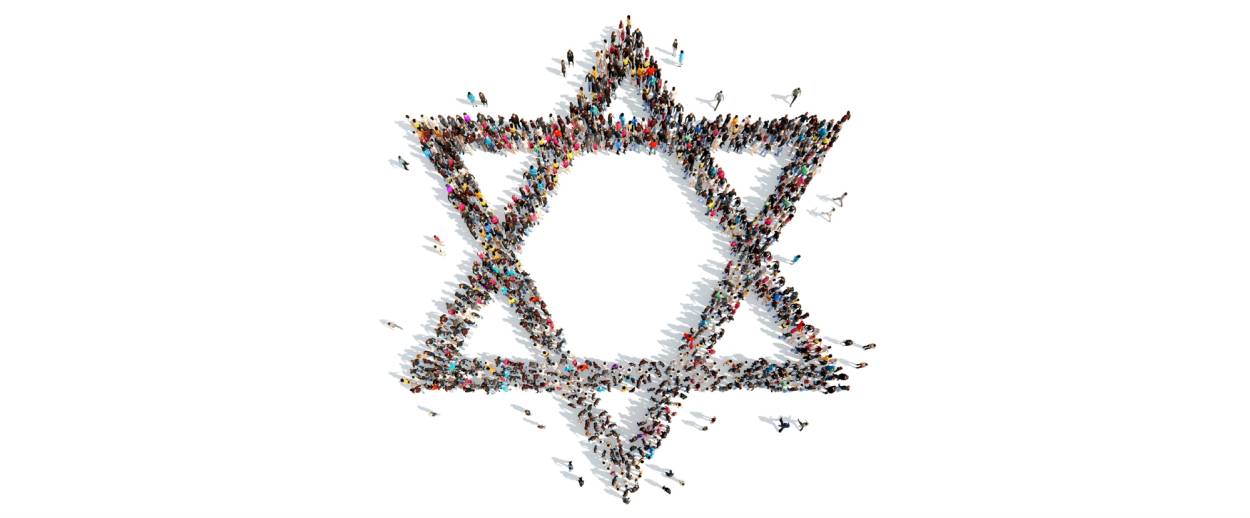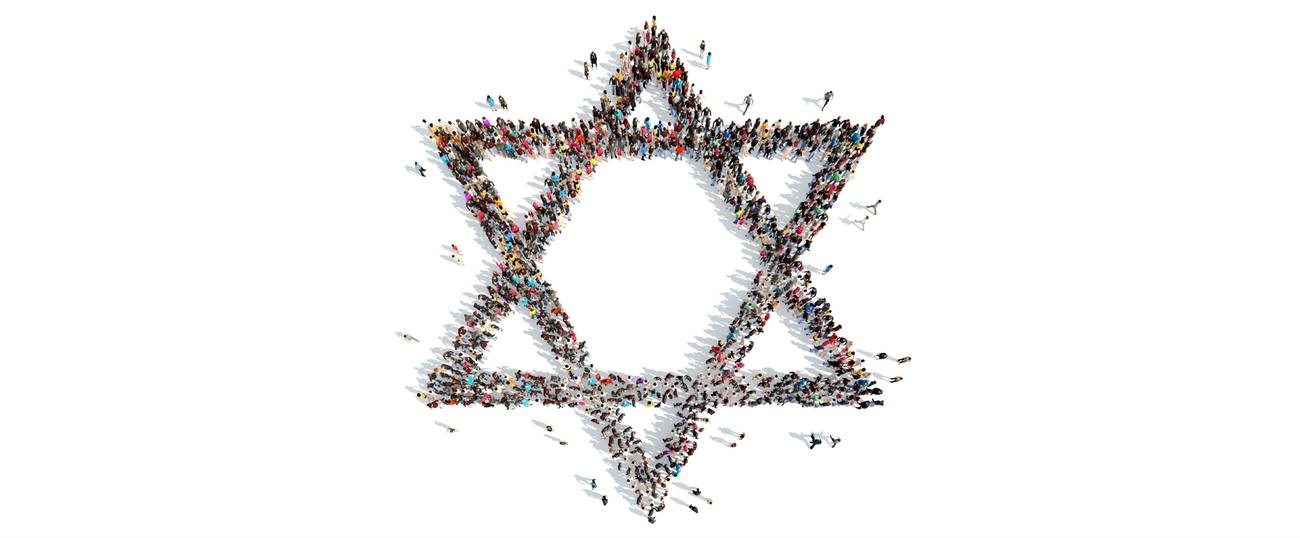It’s Time for Intersectionality to Include the Jews
Intersectional theory is uniquely suited to take on anti-Semitism. But intersectional activists often refuse to do so, perpetuating the prejudice instead.




For the last several days, leftist activist Linda Sarsour has dominated my Facebook feed. In an interview with The Nation, Sarsour insinuated that the feminist movement ought to exclude Zionists. The interview has stoked a larger conversation about the leadership positions of people like Sarsour, who has long advocated for economic warfare (BDS) against Israel, and Rasmea Odeh, a convicted terrorist who actively participated in the murder of two Jewish students at Hebrew University, in intersectional justice movements in America.
Yet again, progressive Jewish activists have been left wondering whether or not we have a place in those movements. We dealt with some of the same questions after the Movement for Black Lives came out with its own platform that falsely accused Israel of “genocide,” and we will undoubtedly confront these issues many times in the future. At the end of the day, however, no matter what the Sarsours of the world say, Jewish issues do belong in the intersectional justice movement. That’s because anti-Semitism and anti-Zionism are both serious intersectional problems, and any truly intersectional movement ought to tackle them.
The problem is not intersectional theory. It’s intersectional activists who fail to adhere to it.
Let me explain. Kimberlé Williams Crenshaw, a scholar, lawyer, and activist who is currently a professor at both UCLA and Columbia Law Schools, coined the term “intersectionality” in 1989. According to Crenshaw and others, intersectionality is a framework for understanding the interactions between different structures of oppression, focusing on people who hold multiple marginalized identities. Crenshaw’s insight was that the oppression experienced by black women, at the intersection of racism and patriarchy, was distinct from the oppression experienced by white women or black men. What began as a study of the unique experiences of black women has broadened in today’s discourse to include a wide range of overlapping identity categories. Beyond academia, it has become an ideological and strategic tool for marginalized communities and advocacy groups to coordinate their efforts and build progressive coalitions. It both highlights the most marginalized voices and provides opportunities for unity in the face of oppression.
Despite its enormous value and importance, however, the idea of intersectionality can also be manipulated to exclude Jewish issues from pro-justice movements. This is because Jews do not fit its traditional definition of marginalization. Unlike other forms of racism, anti-Semitism constructs its subject (the Jews) as powerful, dominating, and privileged. If Jews are oppressors, then they cannot be including in intersectional coalitions, and their experience of oppression is erased. Thus, anti-Semites are easily able to infiltrate and hijack intersectional movements.
Dr. Sina Arnold of the Berlin Institute for Migration and Integration Research at Humboldt University, in her “From Occupation to Occupy: Antisemitism and the Contemporary Left in the United States,” articulated some of the ways in which this logic manifests itself in practice: the anti-Zionist double standard (the unique opposition to the Jewish right to self-determination and statehood, where other peoples are not denied those rights), the refusal to acknowledge anti-Semitism as an issue, and the practice of derailing conversations about anti-Semitism by claiming that accusations of anti-Semitism are little more than cynical projections of political power (a variant of gaslighting called the “Livingstone Formulation,” in which any allegations of anti-Semitism are dismissed as Jewish attempts to silence political opponents). I would argue that Sarsour and her apologists have engaged in all three at different points.
But beyond the immediate discomfort and feelings of alienation that Sarsour’s words have produced in many Jewish women in my life, the controversy surrounding her and Odeh is indicative of a deeper problem and irony: intersectional theory is uniquely suited to tackle anti-Semitism, even as its self-proclaimed adherents often refuse to do so. Instead, the exclusion of Jewish issues from the intersectional justice movement allows anti-Semitism to fester within it. Jews of color comprise some 20% of the US Jewish population, and many Jews are also members of other marginalized communities (women, LGBTQIA+ people, disabled people, etc.). Some of the Jewish communities in the United States that face the harshest economic marginalization, moreover, are religious, and as a result are highly visible and face disproportionate anti-Semitism as well.
In all of these cases, anti-Semitism combines with and exacerbates other experiences of oppression. A Jewish activist who has experienced online harassment (as many Jewish journalists, myself included, have), for example, may hesitate to write publicly about another issue that affects them. Jews involved in politics, no matter what the focus of their advocacy, are subject to accusations of participation in Jewish conspiracies for control of the American government. Assumptions of Jewish wealth and power make it harder for Jews of any socioeconomic class to speak out about the ways in which they are oppressed. Anti-Semitism in social justice spaces makes many Jews feel uncomfortable in those spaces, and therefore deprives them of the communities that could otherwise provide them with tools to stand up to any form of oppression that they face. In all of these ways, anti-Semitism intersects with other forms of oppression for Jews of all stripes and identities.
Even Jews who are not members of other marginalized communities, moreover, can and do face anti-Semitism. Jews who experience elements of white privilege, for example, at the same time face white supremacist racism—witness the anti-Semitic abuse of the “alt-right” and David Duke this past election. In some ways, white-passing Jews live on the verge of socially constructed whiteness without entirely fitting within a racial binary of “white people” and “people of color.” Insofar as the intersectional justice movement understands different structures of oppression to be necessarily connected, it should recognize this very nexus and address anti-Semitism in all of its forms, even when it targets otherwise privileged Jews.
Intersectional activists should also recognize that anti-Semitism is often employed to bolster other structures of oppression beyond the Jewish community. That is to say, anti-Semitism is an intersectional challenge not only because many Jews face it as such but also because its malign influence can harm non-Jewish members of marginalized communities. Traditionally, The Protocols of the Elders of Zion and other anti-Semitic texts have been used as propaganda tools to mobilize conservative political forces against progressive activism. The most classic example is the Czarist use of the Protocols to discredit protests against the monarchy. Today, members of the “alt-right” continue to manipulate anti-Semitism for the same purpose, using, for example, the accusation that the Jews control Hollywood as part of a campaign against a Star Wars film that featured some anti-fascist ideas and a major black character. In this way, anti-Semitism becomes a tool to promote other systems of oppression.
All of this is to say that anti-Semitism is an intersectional challenge. For many Jews, it interacts with other structures of oppression to suppress their voices and disempower them. Anti-Jewish bigotry has also been mobilized, both historically and today, to promote oppressive agendas. Clearly, then, anti-Semitism should be addressed as part of the intersectional justice movement.
***
If this seems obvious, why hasn’t it happened? The most frequent argument that I have heard to the contrary is that Jews have failed to “show up” for social justice causes, and therefore should not be included in intersectional justice activism. There is no question that some Jews could do more, of course, as is true of some members of every community. Nevertheless, no other community is asked to prove its loyalty to the cause in order to earn acceptance—this standard is uniquely applied to Jews.
Moreover, the claim that Jews have not shown up is simply false. With an impressive voter turnout record, the Jewish community in the United States has been a staple voting bloc for progressive candidates. Major Jewish institutions like the Anti-Defamation League and Jewish Community Relations Councils take on many forms of bigotry in culture and politics. Many synagogues promote pro-justice activism in their local communities. And the history of Jewish activism in America goes well beyond Abraham Joshua Heschel to include such crucial figures as Emma Goldman, Harvey Milk, and Saul Alinsky.
This is not to say that Jewish institutions could not do more. Every person, institution, and community should constantly reevaluate themselves and try to improve. The history of Jewish involvement in justice work does not negate our responsibility to further that work in our own lives. But I do mean to challenge the deeply dubious narrative that Jewish issues are excluded from the intersectional justice movement because Jews don’t deserve the support.
Finally, it must be emphasized that anti-Zionism and anti-Semitism, although not one and the same, are inextricably linked. It is not enough for pro-justice activists to accept Jews on the condition that we are docile, individualistic, American, and at their mercy. Our communal rights are also important. Our right to be concerned for our fellow Jews around the world is important. Our right to define ourselves nationally and not be limited to the narrow, Christian-centric definition of “religion” that has been ascribed to us is important. Our rights to defend ourselves and to be represented on the world stage are important.
When activists condemn “Zionists,” they are more often than not, consciously or unconsciously, drawing on a Soviet tradition of leftist anti-Semitism that uses the term “Zionist” as a code for Jews in general. Most American Jews feel attached to Israel and believe it has a right to exist, and therefore are vulnerable to the exclusion of Zionists from pro-justice action. Hatred of “Zionists” is wielded again and again as a mechanism for excluding the activists and institutions that are more representative of American Jewry from the intersectional conversation. According to the anti-Zionist formula, Jews only have a chance for a seat at the table if we first disconnect from our friends, family members, scholars, and coreligionists elsewhere in the world and dismantle the (overwhelmingly Zionist) institutions that the American Jewish community has built over the course of decades to combat often vicious anti-Semitism.
Most Zionists in America do not oppose Palestinian nationalism. To us, participation in a common movement against oppression is an attractive idea. Zionism is the Jewish liberation movement, and as such it has the potential to not only coexist with, but also support and energize other liberation movements, from women’s liberation to Palestinian nationalism. I would like to march with, not against, figures like Linda Sarsour, and ultimately to work with them toward a future in which both Jewish and Palestinian liberation and security are guaranteed within a two-state solution.
***
Anti-Semitism and anti-Zionism are intersectional challenges. The intersectional justice movement should be doing everything that it can to tackle those issues and to include Jews and Jewish institutions in its advocacy work. Linda Sarsour’s cringe-worthy words, however, are symptomatic of a larger problem within pro-justice movements in the United States.
The intersectional discourse has empowered activists to form crucial coalitions, center severely marginalized voices, and establish united fronts against formidable enemies. Intersectional movements can generate great solidarity and progress. And yet, activists are allowing the value of these movements to be undermined by a handful of people determined to leverage these causes to promote hatred and exclusion.
It is time to push back. It is time for intersectionality to include the Jews.
Related: An Intersectional Failure: How Both Israel’s Backers and Critics Write Mizrahi Jews Out of the Story
Benjamin Gladstone studies Judaic Studies and Middle East Studies at Brown University and has written for the New York Times, The Forward, and The Tower, among other publications.